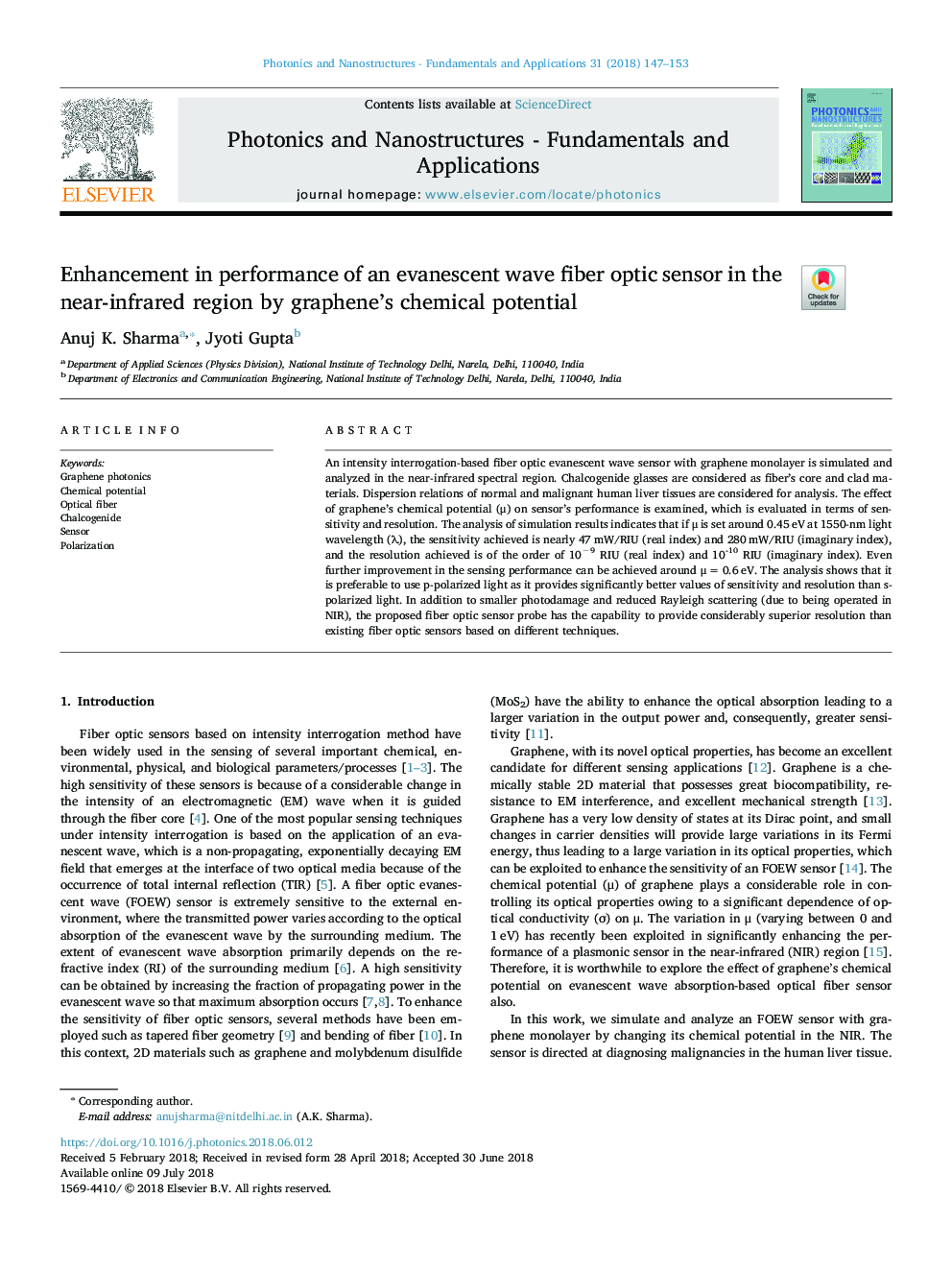| Article ID | Journal | Published Year | Pages | File Type |
|---|---|---|---|---|
| 7932745 | Photonics and Nanostructures - Fundamentals and Applications | 2018 | 7 Pages |
Abstract
An intensity interrogation-based fiber optic evanescent wave sensor with graphene monolayer is simulated and analyzed in the near-infrared spectral region. Chalcogenide glasses are considered as fiber's core and clad materials. Dispersion relations of normal and malignant human liver tissues are considered for analysis. The effect of graphene's chemical potential (μ) on sensor's performance is examined, which is evaluated in terms of sensitivity and resolution. The analysis of simulation results indicates that if μ is set around 0.45â¯eV at 1550-nm light wavelength (λ), the sensitivity achieved is nearly 47â¯mW/RIU (real index) and 280â¯mW/RIU (imaginary index), and the resolution achieved is of the order of 10â9 RIU (real index) and 10-10 RIU (imaginary index). Even further improvement in the sensing performance can be achieved around μâ¯=â¯0.6â¯eV. The analysis shows that it is preferable to use p-polarized light as it provides significantly better values of sensitivity and resolution than s-polarized light. In addition to smaller photodamage and reduced Rayleigh scattering (due to being operated in NIR), the proposed fiber optic sensor probe has the capability to provide considerably superior resolution than existing fiber optic sensors based on different techniques.
Related Topics
Physical Sciences and Engineering
Materials Science
Electronic, Optical and Magnetic Materials
Authors
Anuj K. Sharma, Jyoti Gupta,
